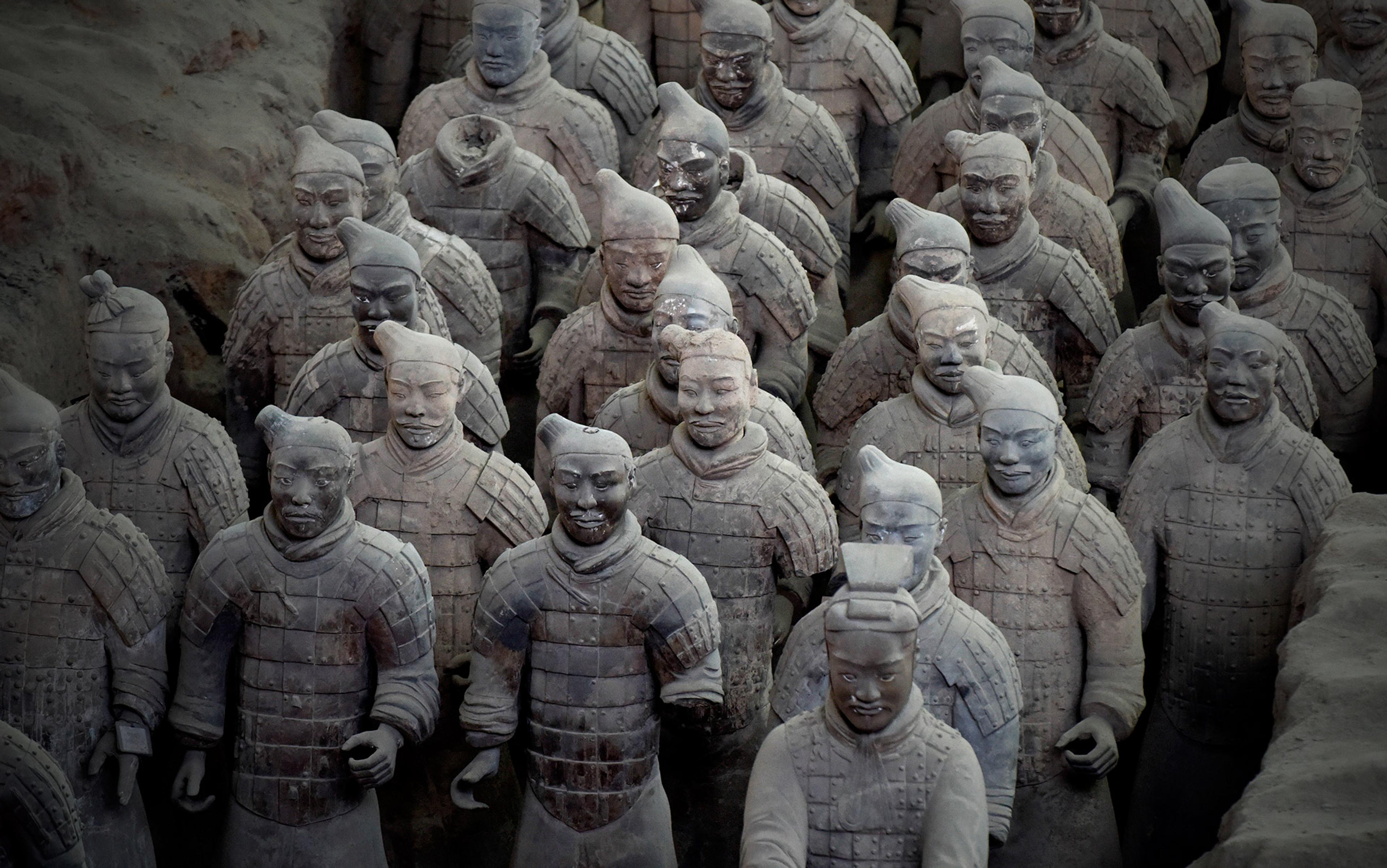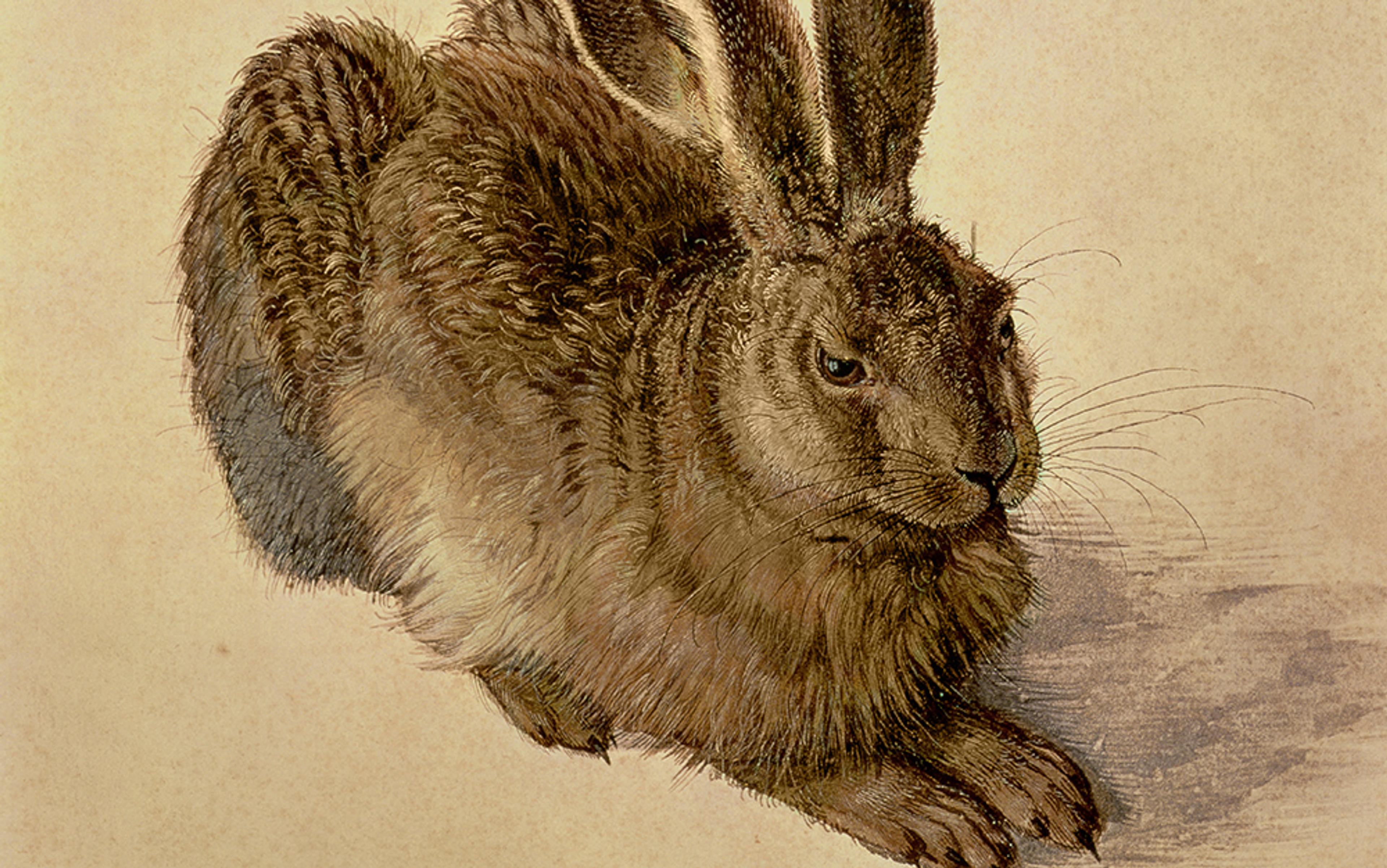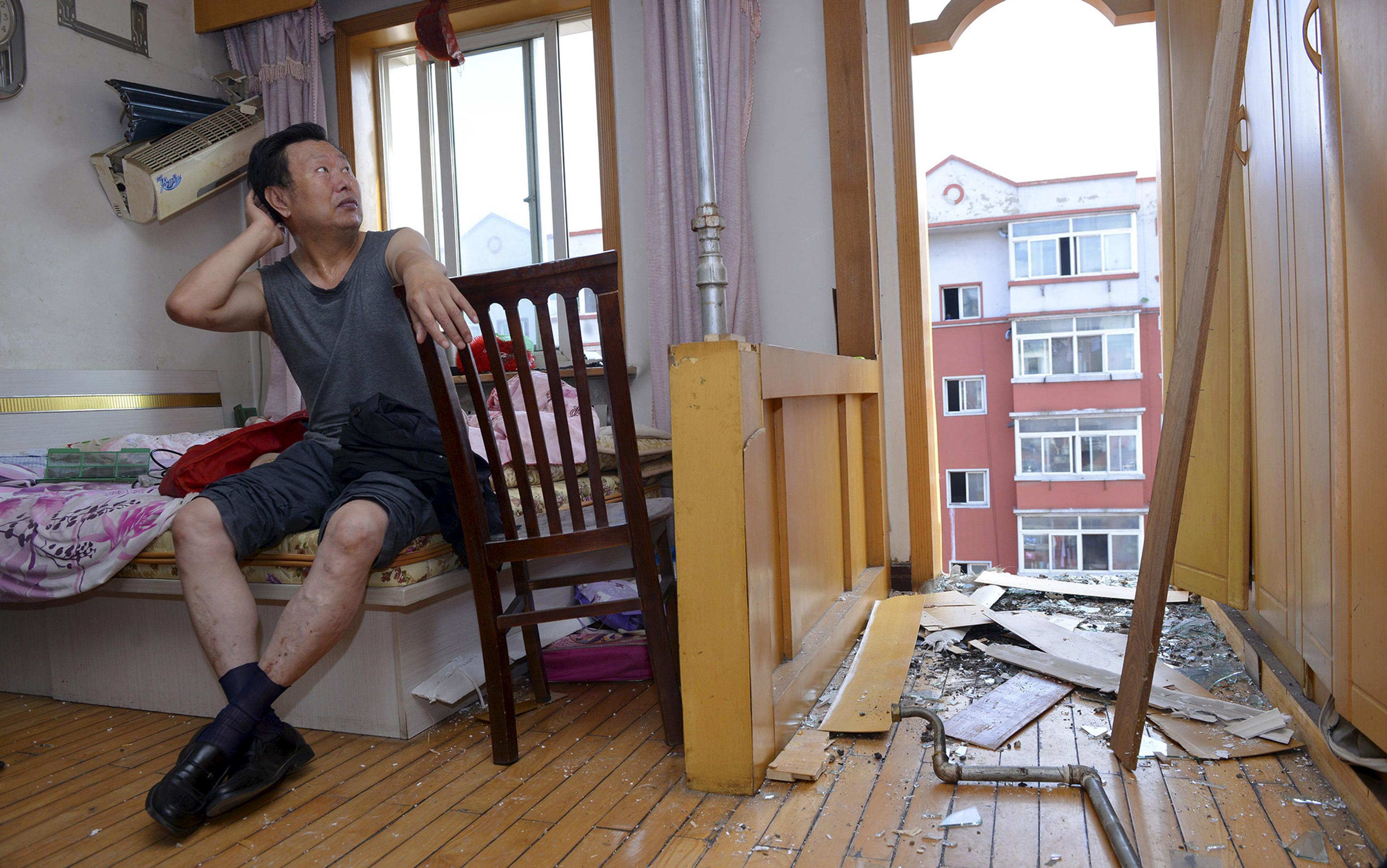In 1956, an exhibition of masterpieces of Chinese art took place in the museum of Asian art in Paris, the Musée Cernuschi. It soon emerged that these pictures were, in fact, forgeries. In this case, the sensitive issue was that the forger was none other than the most famous Chinese painter of the 20th century, Chang Dai-chien, whose works were being exhibited simultaneously at the Musée d’Art Moderne. He was considered the Pablo Picasso of China. And his meeting with Picasso that same year was celebrated as a summit between the masters of Western and Eastern art. Once it became known that the old masterpieces were his forgeries, the Western world regarded him as a mere fraud. Yet for Chang himself, they were anything but forgeries. In any case, most of these old pictures were no mere copies, but rather replicas of lost paintings that were known only from written descriptions.
In China, collectors themselves were often painters. Chang, too, was a passionate collector. He owned more than 4,000 paintings. His collection was not a dead archive but a gathering of Old Masters, a living place of communication and transformation. He was himself a shape-shifting body, an artist of metamorphosis. He slipped effortlessly into a role of past masters and created a certain kind of original. As Shen Fu and Jan Stuart put it in Challenging the Past: The Paintings of Chang Dai-chien (1991):
Chang’s genius probably guarantees that some of his forgeries will remain undetected for a long time to come. By creating ‘ancient’ paintings that matched the verbal descriptions recorded in catalogues of lost paintings, Chang was able to paint forgeries that collectors had been yearning to ‘discover’. In some works, he would transform images in totally unexpected ways; he might recast a Ming dynasty composition as if it were a Song dynasty painting.
His paintings are originals insofar as they carry forward the ‘real trace’ of the Old Masters and also extend and change their oeuvre retrospectively. Only the idea of the unrepeatable, inviolable, unique original in the emphatic sense downgrades them to mere forgeries. This special practice of persisting creation (Fortschöpfung) is conceivable only in a culture that is not committed to revolutionary ruptures and discontinuities, but to continuities and quiet transformations, not to Being and essence, but to process and change.
In 2007, when it became known that terracotta warriors flown in from China were not 2,000-year-old artefacts, but rather copies, the Museum of Ethnology in Hamburg decided to close the exhibition completely. The museum’s director, who was apparently acting as the advocate of truth and truthfulness, said at the time: ‘We have come to the conclusion that there is no other option than to close the exhibition completely, in order to maintain the museum’s good reputation.’ The museum even offered to reimburse the entrance fees of all visitors to the exhibition.
From the start, the production of replicas of the terracotta warriors proceeded in parallel with the excavations. A replica workshop was set up on the excavation site itself. But they were not producing ‘forgeries’. Rather, we might say that the Chinese were trying to restart production, as it were – production that from the beginning was not creation but already reproduction. Indeed, the originals themselves were manufactured through serial mass-production using modules or components – a process that could easily have been continued, had the original production methods been available.
The Chinese have two different concepts of a copy. Fangzhipin (仿製品) are imitations where the difference from the original is obvious. These are small models or copies that can be purchased in a museum shop, for example. The second concept for a copy is fuzhipin (複製品). They are exact reproductions of the original, which, for the Chinese, are of equal value to the original. It has absolutely no negative connotations. The discrepancy with regard to the understanding of what a copy is has often led to misunderstandings and arguments between China and Western museums. The Chinese often send copies abroad instead of originals, in the firm belief that they are not essentially different from the originals. The rejection that then comes from the Western museums is perceived by the Chinese as an insult.
In spite of globalisation, the Far East still seems to be the source of a great deal of surprise and confusion, which could release deconstructive energies. The Far Eastern notion of identity is also very confusing to the Western observer. The Ise Grand Shrine, the supreme Shinto sanctuary located on Honshu island, is 1,300 years old for the millions of Japanese people who go there on pilgrimage every year. But in reality this temple complex is completely rebuilt from scratch every 20 years.
This religious practice is so alien to Western art historians that, after heated debates, UNESCO removed this Shinto temple from the list of World Heritage sites. For the experts at UNESCO, the shrine is 20 years old at most. In this case, which is the original and which the copy?
In a culture where continual reproduction represents a technique for conservation and preservation, replicas are anything but mere copies
This is a total inversion of the relationship between original and copy. Or the difference between original and copy vanishes altogether. Instead of a difference between original and copy, there appears a difference between old and new. We could even say that the copy is more original than the original, or the copy is closer to the original than the original, for the older the building becomes, the further it is from its original state. A reproduction would restore it, as it were, to its ‘original state’, especially since it is not linked to a particular artist.
Not just the building but all the temple treasures of Ise are completely replaced, too. Two identical sets of treasures can always be found in the temple. The question of original and copy does not arise at all. These are two copies that are, at the same time, two originals. It used to be that when a new set was produced, the old set would be destroyed. Flammable parts were burned, and metal parts were buried. As of the last regeneration, however, the treasures are no longer destroyed but put on display in a museum. They owe their rescue to their increased exhibition value. However, their destruction belongs to their cult value itself, which is clearly disappearing more and more in favour of their museum exhibition value.
In the West, when monuments are restored, old traces are often particularly highlighted. Original elements are treated like relics. The Far East is not familiar with this cult of the original. It has developed a completely different technique of preservation that might be more effective than conservation or restoration. This takes place through continual reproduction. This technique completely abolishes the difference between original and replica. We might also say that originals preserve themselves through copies. Nature provides the model. The organism also renews itself through continual cell-replacement. After a certain period of time, the organism is a replica of itself. The old cells are simply replaced by new cell material. In this case, the question of an original does not arise. The old dies off and is replaced by the new. Identity and renewal are not mutually exclusive. In a culture where continual reproduction represents a technique for conservation and preservation, replicas are anything but mere copies.
The cathedral of Freiburg Minster in southwest Germany is covered in scaffolding almost all year round. The sandstone from which it is built is a very soft, porous material that does not withstand natural erosion by rain and wind. After a while, it crumbles. As a result, the cathedral is continually being examined for damage, and eroded stones are replaced. And in the cathedral’s dedicated workshop, copies of the damaged sandstone figures are constantly being produced. Of course, attempts are made to preserve the stones from the Middle Ages for as long as possible. But at some point they, too, are removed and replaced with new stones.
Fundamentally, this is the same operation as with the Japanese shrine, except in this case the production of a replica takes place very slowly and over long periods of time. Yet ultimately the result is exactly the same. After a certain period of time, one effectively has a reproduction. However, one imagines one is looking at an original. But what would be original about Freiburg Minster if the last old stone were replaced by a new one?
The original is something imaginary. It is in principle possible to build an exact copy, a fuzhipin of Freiburg Minster, in one of China’s many theme parks. Is this then a copy or an original? What makes it a mere copy? What characterises the Freiburg Minster as an original? Materially, its fuzhipin might not differ in any way from the original that itself might someday no longer contain any original parts. It would be, if at all, the place and the cult value related to the practice of worship that might differentiate the Freiburg Minster from its fuzhipin in a Chinese theme park. However, remove its cult value completely in favour of its exhibition value, and its difference from its double might disappear, too.
The onset of industrialisation increased the need for the museumisation of the past
In the field of art as well, the idea of an unassailable original developed historically in the Western world. Back in the 17th century, excavated artworks from antiquity were treated quite differently from today. They were not restored in a way that was faithful to the original. Instead, there was massive intervention in these works, changing their appearance. For example, Gian Lorenzo Bernini (1598-1680) arbitrarily added a sword-hilt to Ares Ludovisi, the ancient statue of the god Mars, which was itself a Roman copy of a Greek original. During Bernini’s lifetime, the Colosseum itself was used as a marble quarry. Its walls were simply dismantled and used for new buildings.
The preservation of historical monuments in the modern sense of the term begins with the museumisation of the past, whereby cult value increasingly gives way to exhibition value. Interestingly, this goes hand in hand with the rise of tourism. The so-called Grand Tour that began in the Renaissance and reached its apogee in the 18th century was a precursor of modern tourism. In the eyes of tourists, the exhibition value of ancient buildings and artworks, which were presented to them as attractions, increased. In the same century as tourism was beginning, the first measures to preserve ancient structures were undertaken. Now it seemed imperative to preserve ancient structures. The onset of industrialisation further increased the need for the conservation and museumisation of the past. In addition, the burgeoning fields of art history and archaeology discovered the epistemological value of old buildings and artworks, and rejected any intervention that might alter them.
A prior, primordial positing is alien to Far Eastern culture. It is probably this intellectual position that explains why Asians have far fewer scruples about cloning than Europeans. The South Korean cloning researcher Hwang Woo-suk, who attracted worldwide attention with his cloning experiments in 2004, is a Buddhist. He found a great deal of support and followers among Buddhists, while Christians called for a ban on human cloning. Though since revealed to be falsified, at the time Hwang legitimised his cloning experiments with his religious affiliation: ‘I am Buddhist, and I have no philosophical problem with cloning. And as you know, the basis of Buddhism is that life is recycled through reincarnation. In some ways, I think, therapeutic cloning restarts the circle of life.’
For the Ise shrine, too, the technique of preservation resides in allowing the circle of life to begin anew over and over again, maintaining life not against death but through and beyond death. Death itself is built into the system of preservation. In this way, being gives way to the cyclical process that includes death and decay. In the unending cycle of life, there is no longer anything unique, original, singular or final. Only repetitions and reproductions exist. In the Buddhist notion of the endless cycle of life, instead of creation there is decreation: not creation but iteration; not revolution but recurrence; not archetypes but modules determine the Chinese technology of production.
It is not by chance that printing was invented in China
As we know, even the terracotta armies are manufactured from modules or stock components. Production in modules is not consistent with the idea of the original, as from the outset these are stock components. Foremost in modular production is not the idea of originality or uniqueness, but reproducibility. Its aim is not the manufacture of a unique, original object but mass-production that nevertheless allows variations and modulations. It modulates the same, thereby creating differences. Modular production is modulating and varying. Thus it allows for a great deal of variety. However, it negates uniqueness in order to increase the efficiency of reproduction. For example, it is not by chance that printing was invented in China. Chinese painting, too, uses modular technology. The Chinese treatise on painting, the Manual of the Mustard Seed Garden, contains an infinite row of component parts from which a painting could be composed or indeed assembled.
The question of creativity arises once again in light of this modular type of production. Combining and varying elements becomes more important. Here, Chinese cultural technology works like nature. As the German art historian Lothar Ledderose put it in Ten Thousand Things (2000):
Chinese artists … never lose sight of the fact that producing works in large numbers exemplifies creativity, too. They trust that, as in nature, there always will be some among the 10,000 things from which change springs.
Chinese art has a functional relationship with nature, not a mimetic one. It is not a question of depicting nature as realistically as possible but of operating exactly like nature. In nature, successive variations also produce something new, clearly without any kind of ‘genius’. As Ledderose says:
Painters like Zheng Xie strive to emulate nature in two respects. They produce large, almost limitless quantities of works, and are enabled to do so by module systems of compositions, motifs and brushstrokes. But they also imbue every single work with its own unique and inimitable shape, as nature does in its prodigious invention of forms. A lifetime devoted to training his aesthetic sensibilities enables the artist to approximate the power of nature.
This is an edited extract from ‘Shanzai: Deconstruction in Chinese’ © 2017 by Byung-Chul Han, translated by Philippa Hurd, and published by MIT Press.






